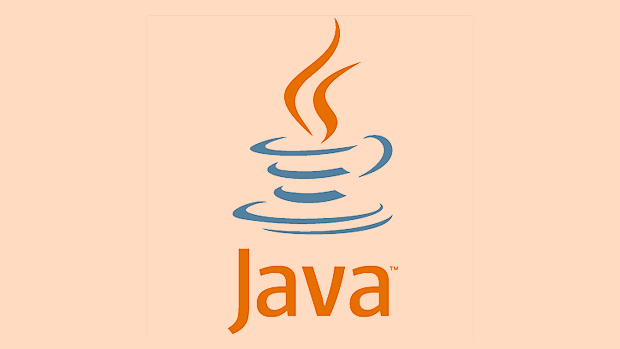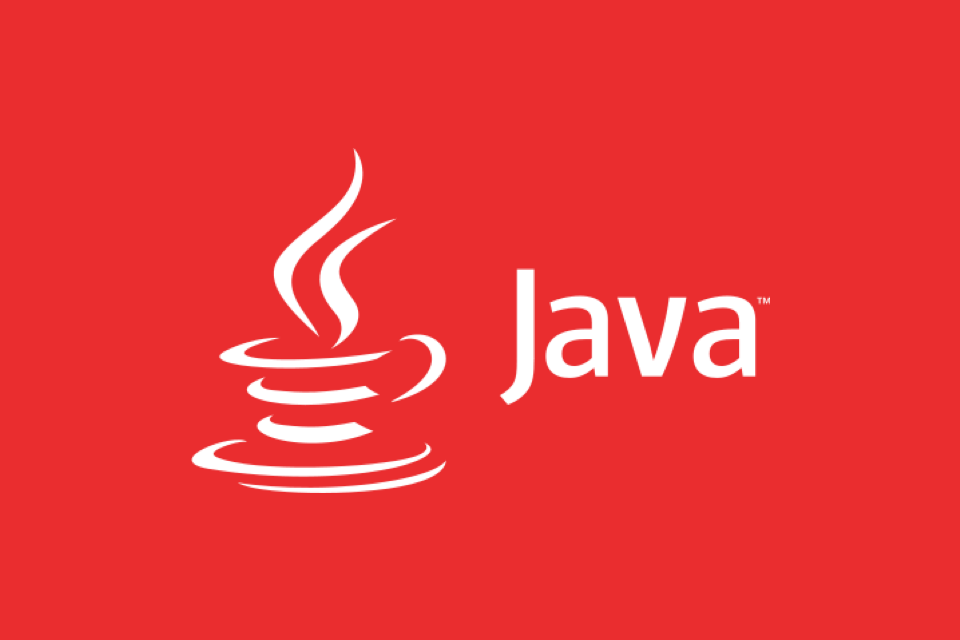Building Real-Time Applications with Java and WebSockets
Jul 25, 2025 am 01:31 AMWebSockets enable real-time, bidirectional communication in web applications, which is essential for features like live chat and notifications; unlike HTTP, they allow servers to push data instantly to clients. 1. Use Spring Boot with the spring-boot-starter-websocket dependency to simplify setup. 2. Configure WebSocket support via @EnableWebSocketMessageBroker, register STOMP endpoints (e.g., /ws), and enable a simple message broker for topics and queues. 3. Define a message model (e.g., Message class with sender and content). 4. Create a controller with @MessageMapping to handle incoming messages and @SendTo to broadcast responses. 5. On the client side, connect using SockJS and STOMP.js, subscribe to topics (e.g., /topic/public), and send messages to application endpoints (e.g., /app/chat.sendMessage). 6. For private messaging, use SimpMessagingTemplate to send messages to user-specific destinations (e.g., /user/queue/messages). 7. Secure endpoints with Spring Security by requiring authentication for WebSocket access. 8. Scale effectively by replacing the in-memory broker with Redis or RabbitMQ, minimizing session storage, and considering Spring WebFlux for reactive, high-concurrency support. With proper configuration and tools, Java and WebSockets provide a robust, production-ready solution for real-time communication.

Real-time communication is a must-have in modern web applications — from live chat and stock tickers to collaborative tools and live notifications. Java, being a robust and widely adopted backend language, pairs well with WebSockets to deliver full-duplex, bidirectional communication between clients and servers. Here’s how you can build real-time applications using Java and WebSockets effectively.

What Are WebSockets and Why Use Them?
HTTP is request-response based — the client asks, the server replies. But for real-time features, you need the server to push data to the client instantly, without waiting for a request. That’s where WebSockets come in.
WebSockets establish a persistent, low-latency connection between client and server. Once connected, either side can send messages at any time. Compared to older techniques like polling or Server-Sent Events (SSE), WebSockets offer:

- Lower latency
- Reduced overhead
- True two-way communication
Java EE (now Jakarta EE) has built-in support for WebSockets via the JSR 356 API, and Spring Framework enhances this with even simpler abstractions.
Setting Up WebSockets in Java (Using Spring Boot)
Spring Boot simplifies WebSocket integration with auto-configuration and annotation-driven development. Here's a step-by-step setup:

1. Add Dependencies
In your pom.xml (for Maven):
<dependency>
<groupId>org.springframework.boot</groupId>
<artifactId>spring-boot-starter-websocket</artifactId>
</dependency>2. Enable WebSocket Support
Create a configuration class:
@Configuration
@EnableWebSocketMessageBroker
public class WebSocketConfig implements WebSocketMessageBrokerConfigurer {
@Override
public void registerStompEndpoints(StompEndpointRegistry registry) {
registry.addEndpoint("/ws").withSockJS(); // SockJS for fallback
}
@Override
public void configureMessageBroker(MessageBrokerRegistry registry) {
registry.setApplicationDestinationPrefixes("/app");
registry.enableSimpleBroker("/topic", "/queue"); // In-memory broker
}
}This config:
- Exposes a WebSocket endpoint at
/ws - Uses STOMP (Simple Text Oriented Messaging Protocol) over WebSockets
- Enables an in-memory message broker for broadcasting
3. Create a Message Model
public class Message {
private String content;
private String sender;
// constructors, getters, setters
}4. Handle Messages with a Controller
@Controller
public class WebSocketController {
@MessageMapping("/chat.sendMessage")
@SendTo("/topic/public")
public Message sendMessage(@Payload Message message) {
return message;
}
}When a client sends a message to /app/chat.sendMessage, Spring routes it here and broadcasts the response to all subscribers of /topic/public.
Client-Side: Connecting with JavaScript
On the frontend, use the SockJS and STOMP.js libraries for easy integration:
<script src="https://cdn.jsdelivr.net/npm/sockjs-client@1/dist/sockjs.min.js"></script>
<script src="https://cdn.jsdelivr.net/npm/@stomp/stompjs@6.1.0/bundles/stomp.umd.min.js"></script>
<script>
const socket = new SockJS('/ws');
const stompClient = Stomp.over(socket);
stompClient.connect({}, function(frame) {
console.log('Connected: ' frame);
stompClient.subscribe('/topic/public', function(messageOutput) {
const message = JSON.parse(messageOutput.body);
console.log('Received:', message);
});
});
// Send a message
function sendMsg() {
stompClient.send("/app/chat.sendMessage", {}, JSON.stringify({
'sender': 'Alice',
'content': 'Hello!'
}));
}
</script>Now, every time sendMsg() is called, the server receives it and rebroadcasts it to all connected clients.
Advanced: User-Specific Messaging and Security
For private messaging or notifications, use user destinations:
@MessageMapping("/private.message")
public void sendPrivate(@Payload Message message, SimpMessagingTemplate messagingTemplate) {
messagingTemplate.convertAndSendToUser(
message.getRecipient(), "/queue/messages", message
);
}This sends a message directly to a specific user (e.g., /user/alice/queue/messages), ideal for notifications or DMs.
Also, secure your WebSocket endpoints using Spring Security:
@Override
protected void configure(HttpSecurity http) throws Exception {
http.authorizeRequests()
.antMatchers("/ws/**").authenticated();
}And ensure user authentication is passed during the WebSocket handshake.
Performance and Scalability Tips
While WebSockets are efficient, scaling them requires care:
- Use a message broker like RabbitMQ or Redis for clustering (replace simple broker in production)
- Avoid storing large session data in memory
- Implement heartbeats and connection timeouts
- Consider using Reactive WebSocket support in Spring WebFlux for high concurrency
Building real-time apps with Java and WebSockets isn’t just feasible — it’s elegant and production-ready. With Spring Boot’s powerful abstractions, you can go from idea to live updates in minutes.
Basically, set up the endpoint, define your message flow, and let STOMP and Spring handle the heavy lifting. It’s not magic — but it’s close.
The above is the detailed content of Building Real-Time Applications with Java and WebSockets. For more information, please follow other related articles on the PHP Chinese website!

Hot AI Tools

Undress AI Tool
Undress images for free

Undresser.AI Undress
AI-powered app for creating realistic nude photos

AI Clothes Remover
Online AI tool for removing clothes from photos.

Clothoff.io
AI clothes remover

Video Face Swap
Swap faces in any video effortlessly with our completely free AI face swap tool!

Hot Article

Hot Tools

Notepad++7.3.1
Easy-to-use and free code editor

SublimeText3 Chinese version
Chinese version, very easy to use

Zend Studio 13.0.1
Powerful PHP integrated development environment

Dreamweaver CS6
Visual web development tools

SublimeText3 Mac version
God-level code editing software (SublimeText3)
 Asynchronous Programming Techniques in Modern Java
Jul 07, 2025 am 02:24 AM
Asynchronous Programming Techniques in Modern Java
Jul 07, 2025 am 02:24 AM
Java supports asynchronous programming including the use of CompletableFuture, responsive streams (such as ProjectReactor), and virtual threads in Java19. 1.CompletableFuture improves code readability and maintenance through chain calls, and supports task orchestration and exception handling; 2. ProjectReactor provides Mono and Flux types to implement responsive programming, with backpressure mechanism and rich operators; 3. Virtual threads reduce concurrency costs, are suitable for I/O-intensive tasks, and are lighter and easier to expand than traditional platform threads. Each method has applicable scenarios, and appropriate tools should be selected according to your needs and mixed models should be avoided to maintain simplicity
 Best Practices for Using Enums in Java
Jul 07, 2025 am 02:35 AM
Best Practices for Using Enums in Java
Jul 07, 2025 am 02:35 AM
In Java, enums are suitable for representing fixed constant sets. Best practices include: 1. Use enum to represent fixed state or options to improve type safety and readability; 2. Add properties and methods to enums to enhance flexibility, such as defining fields, constructors, helper methods, etc.; 3. Use EnumMap and EnumSet to improve performance and type safety because they are more efficient based on arrays; 4. Avoid abuse of enums, such as dynamic values, frequent changes or complex logic scenarios, which should be replaced by other methods. Correct use of enum can improve code quality and reduce errors, but you need to pay attention to its applicable boundaries.
 Understanding Java NIO and Its Advantages
Jul 08, 2025 am 02:55 AM
Understanding Java NIO and Its Advantages
Jul 08, 2025 am 02:55 AM
JavaNIO is a new IOAPI introduced by Java 1.4. 1) is aimed at buffers and channels, 2) contains Buffer, Channel and Selector core components, 3) supports non-blocking mode, and 4) handles concurrent connections more efficiently than traditional IO. Its advantages are reflected in: 1) Non-blocking IO reduces thread overhead, 2) Buffer improves data transmission efficiency, 3) Selector realizes multiplexing, and 4) Memory mapping speeds up file reading and writing. Note when using: 1) The flip/clear operation of the Buffer is easy to be confused, 2) Incomplete data needs to be processed manually without blocking, 3) Selector registration must be canceled in time, 4) NIO is not suitable for all scenarios.
 How Java ClassLoaders Work Internally
Jul 06, 2025 am 02:53 AM
How Java ClassLoaders Work Internally
Jul 06, 2025 am 02:53 AM
Java's class loading mechanism is implemented through ClassLoader, and its core workflow is divided into three stages: loading, linking and initialization. During the loading phase, ClassLoader dynamically reads the bytecode of the class and creates Class objects; links include verifying the correctness of the class, allocating memory to static variables, and parsing symbol references; initialization performs static code blocks and static variable assignments. Class loading adopts the parent delegation model, and prioritizes the parent class loader to find classes, and try Bootstrap, Extension, and ApplicationClassLoader in turn to ensure that the core class library is safe and avoids duplicate loading. Developers can customize ClassLoader, such as URLClassL
 How does a HashMap work internally in Java?
Jul 15, 2025 am 03:10 AM
How does a HashMap work internally in Java?
Jul 15, 2025 am 03:10 AM
HashMap implements key-value pair storage through hash tables in Java, and its core lies in quickly positioning data locations. 1. First use the hashCode() method of the key to generate a hash value and convert it into an array index through bit operations; 2. Different objects may generate the same hash value, resulting in conflicts. At this time, the node is mounted in the form of a linked list. After JDK8, the linked list is too long (default length 8) and it will be converted to a red and black tree to improve efficiency; 3. When using a custom class as a key, the equals() and hashCode() methods must be rewritten; 4. HashMap dynamically expands capacity. When the number of elements exceeds the capacity and multiplies by the load factor (default 0.75), expand and rehash; 5. HashMap is not thread-safe, and Concu should be used in multithreaded
 Effective Use of Java Enums and Best Practices
Jul 07, 2025 am 02:43 AM
Effective Use of Java Enums and Best Practices
Jul 07, 2025 am 02:43 AM
Java enumerations not only represent constants, but can also encapsulate behavior, carry data, and implement interfaces. 1. Enumeration is a class used to define fixed instances, such as week and state, which is safer than strings or integers; 2. It can carry data and methods, such as passing values ??through constructors and providing access methods; 3. It can use switch to handle different logics, with clear structure; 4. It can implement interfaces or abstract methods to make differentiated behaviors of different enumeration values; 5. Pay attention to avoid abuse, hard-code comparison, dependence on ordinal values, and reasonably naming and serialization.
 How to handle exceptions properly in Java?
Jul 06, 2025 am 02:43 AM
How to handle exceptions properly in Java?
Jul 06, 2025 am 02:43 AM
The key to handling exceptions in Java is to catch them, handle them clearly, and not cover up problems. First, we must catch specific exception types as needed, avoid general catches, and prioritize checkedexceptions. Runtime exceptions should be judged in advance; second, we must use the log framework to record exceptions, and retry, rollback or throw based on the type; third, we must use the finally block to release resources, and recommend try-with-resources; fourth, we must reasonably define custom exceptions, inherit RuntimeException or Exception, and carry context information for easy debugging.
 What is a Singleton design pattern in Java?
Jul 09, 2025 am 01:32 AM
What is a Singleton design pattern in Java?
Jul 09, 2025 am 01:32 AM
Singleton design pattern in Java ensures that a class has only one instance and provides a global access point through private constructors and static methods, which is suitable for controlling access to shared resources. Implementation methods include: 1. Lazy loading, that is, the instance is created only when the first request is requested, which is suitable for situations where resource consumption is high and not necessarily required; 2. Thread-safe processing, ensuring that only one instance is created in a multi-threaded environment through synchronization methods or double check locking, and reducing performance impact; 3. Hungry loading, which directly initializes the instance during class loading, is suitable for lightweight objects or scenarios that can be initialized in advance; 4. Enumeration implementation, using Java enumeration to naturally support serialization, thread safety and prevent reflective attacks, is a recommended concise and reliable method. Different implementation methods can be selected according to specific needs






